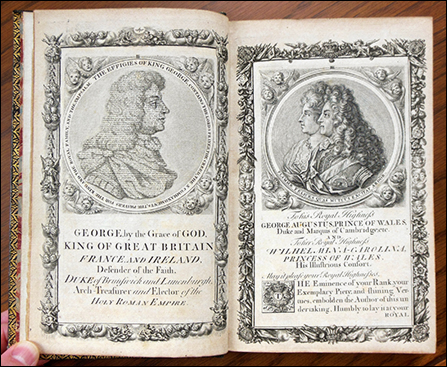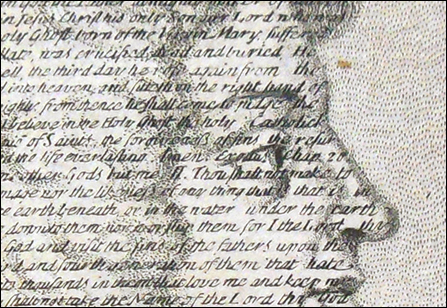God Save the King!
Belated congratulations to Will and Kate and little baby George! It's a good solid name, borne by six previous monarchs.
The first King George came to the throne 299 years ago, on the first of August 1714, following the death of his distant cousin, Queen Anne. Although she had given birth to seventeen children, none of them survived her, an astonishing rate of mortality even at a time when most families could expect to lose one or two children. And although at least fifty people were more closely related to Anne than was her cousin George (a minor German prince), all of them were Catholics and therefore ineligible to take the throne because of a law, known as the Act of Settlement, passed by Parliament in 1701.
Ever since the days of Henry VIII, British monarchs had carried the title "Defender of the Faith." Ironically, the faith being defended was originally Catholicsm, the title having been bestowed on Henry by Pope Leo X in recognition of a book the king had written upholding the pope's supremacy. But by the time George the First came to the throne in 1714, the world had changed. The British now expected their king to defend the Protestant viewpoint, not the Catholic. The monarchy and the church became so fused together that when a new edition of the Anglican Book of Common Prayer was printed in 1717, it included an engraving of King George with the Lord's Prayer, the Ten Commandments, and the 21st Psalm written in tiny letters right across his face!
Another portrait in the book shows the Prince of Wales, also named George, who would become King George II in 1727. His grandson, George III, was the famous "Mad King George" whose stubbornness drove the American colonists to rebellion in 1775.
LSU's Rare Book Collection contains several early Books of Common Prayer. In addition to being of interest to religious scholars, they can also be used to study the history of bookbinding. The three shown here, dating from 1615, 1693, and 1717, have especially fine bindings, evidence of how much they were treasured by their original owners. One of the volumes bears a note saying that in 1713, it was the property of Mary Bowen of Upton Castle in the Welsh county of Pembrokeshire. It passed to her daughter Martha McLaughlin, who died in Abbeytown, County Roscommon, Ireland, in 1791. Her son William repaired it in 1814 "in memorial of her genuine and unaffected piety, and to record his unabated love and affection for the tenderest and best of mothers."
—Michael Taylor, Assistant Curator of Books



